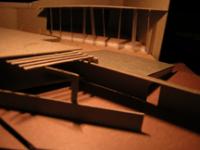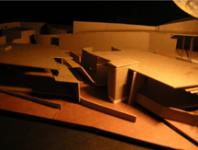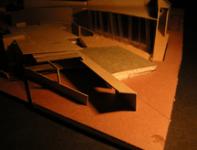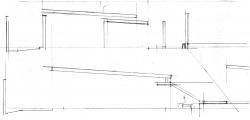Architecture as a trace.
The idea of a trace can be read primarily as a physical imprint, or an impression, at its most tangible level.
The design for the Banganga Crematorium evolves as a series of diverging paths and routes traced out in the ground – meant to heighten the sense of procession along a sequence of narrow and constricting volumes until space is released and the physical senses and views expand – to encompass the sea, the sky and the barren landscape . . .
other interpretations, such as a memory or association to a place, is referenced in the remnants of pre-existing construction - rust-covered steel roof frames of the previous pyres – that are reinterpreted as abstract pieces set within the landscape and re-used as support for the new roof structure of the pyre – now raised upon a plinth to allow for expanding views
visitors would perceive the building as a landscape formation where fragments of ‘built’ elements create a sense of place by immersing the individual in the phenomenology of the site - heightening the awareness of natural elements, modulating these elements such as the sunlight and the expansive views across the Arabian sea, and reinforcing connections with the ground, with the earth, whilst offering the individual the opportunity to record, or ‘trace’ the motion of shadows thrown upon a wall, to sense the changing intensity of the breeze as it funnels through the building, or follow the motion of people as they engage in the act of mourning, rememberance or quiet contemplation.
As the individual moves further in, views stretch across open and green areas to allow for release, and adjacent spaces are subtly demarcated through level differences, through the use of walls, raked concrete planes and other porous screening elements of bamboo, wood or stone
A sense of isolation is created to allow for inner realisation and peace, stillness and silence broken only by the sound of waves crashing against the rocks below.
The journey thus traces a path that leads from the gross-ness of the outside world, to an experientiality that offers the individual a sense of spiritual release and a one-ness with the forces of nature.
Presence – place - silence
Journey – trace – path – procession
Incomplete-ness – a continuum – a cycle
2003
2004
Rebuilding of existing crematorium on a site by the Arabian Sea. Existing funerary shrines/structures had to be accomodated within the complex. The proposal intends the use of existing steel frames to support the roof above the wood-fired pyre - whereas the new gas-fired chambers will be housed within abstracted concrete volumes.
Design: Suprio Bhattacharjee. Thanks: Rupal Shah, Ramakrishna Subramaniam
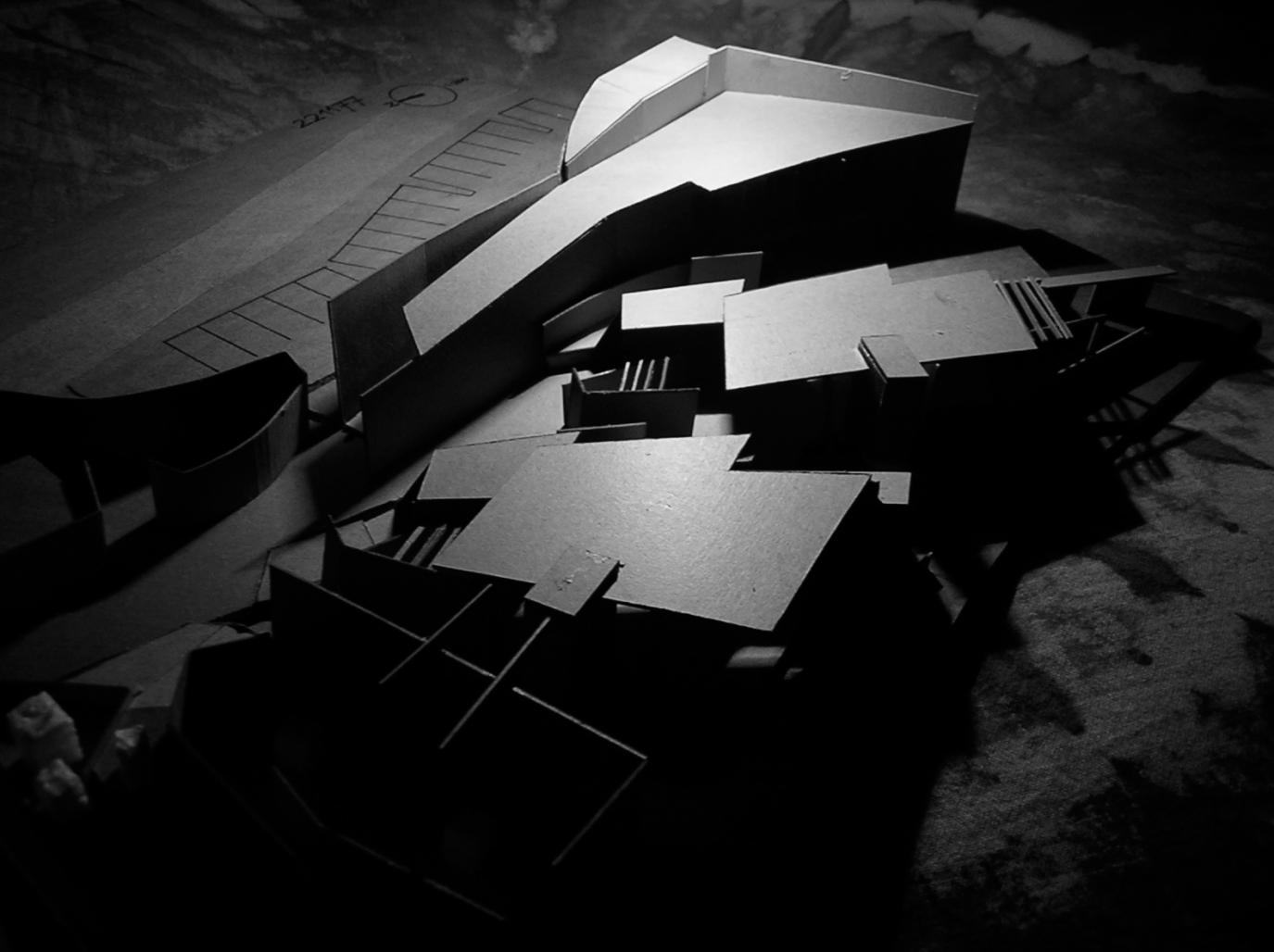

.jpg)
.jpg)
